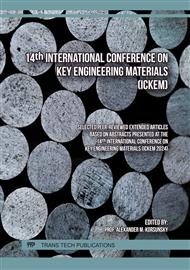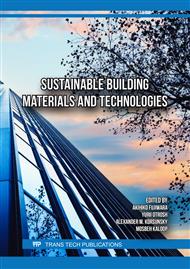p.53
p.61
p.67
p.75
p.83
p.93
p.99
p.105
p.111
Characterization of Phosphogypsum for Potential Uses in Soil Stabilization
Abstract:
This research investigated the influence of phosphogypsum (PG) addition to mortar mixture and determined the possibility of utilizing PG in soil stabilization. Originally, the chemical composition and mineralogy of the PG were determined using X-ray fluorescence (XRF) and X-ray diffraction (XRD) tests. The principal constituent of PG becomes calcium sulfate hemihydrate with the presence of some impurities. A total of 9 mixes have been developed: A plain mortar mix is a comparative base, and the other 4 mixes are with 5, 10, 15, and 20 % cement replacement with PG for each type (fresh and stockpiled PG called PGF and PGS, respectively). The experimental program focuses on analyzing the effects of PG on setting time, hardened density, compressive strength, and water expansion of mortar mixtures before its soil stabilization application. Test results indicate that with higher PG, the setting time of the mortar mix is delayed except for the mixture with 20% PG, which experienced an early false set. The results of the compressive strength tests revealed that the 5% PG mixes exhibited higher values compared to the control mix, starting from the 28-day curing period, regardless of PG type. Although the higher PG content and compressive strength lowered, the expansion levels were very low based on the ASTM C 1260 limits for all mixtures, excluding heaving risks.
Info:
Periodical:
Pages:
83-90
Citation:
Online since:
August 2024
Keywords:
Price:
Сopyright:
© 2024 Trans Tech Publications Ltd. All Rights Reserved
Share:
Citation:



